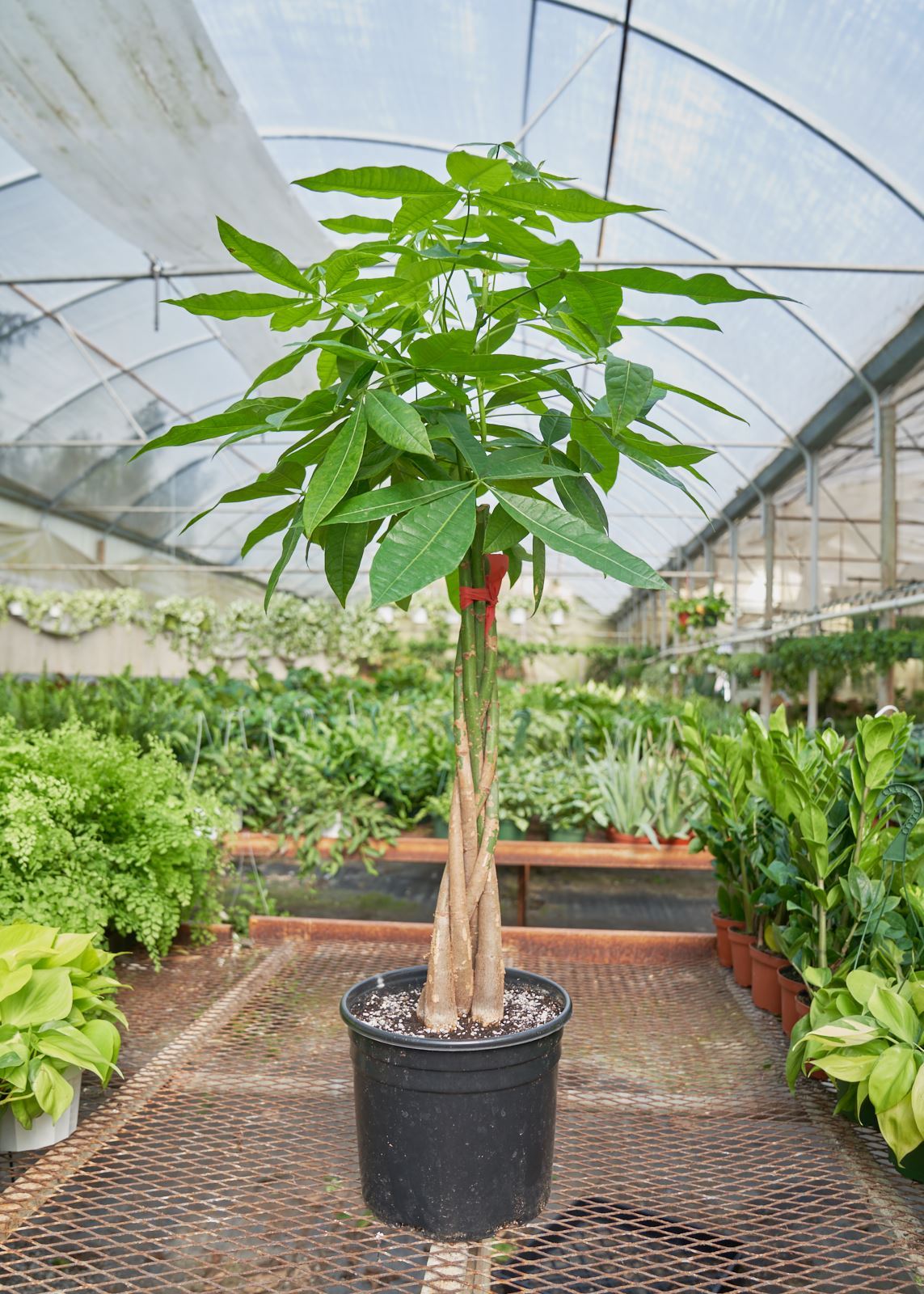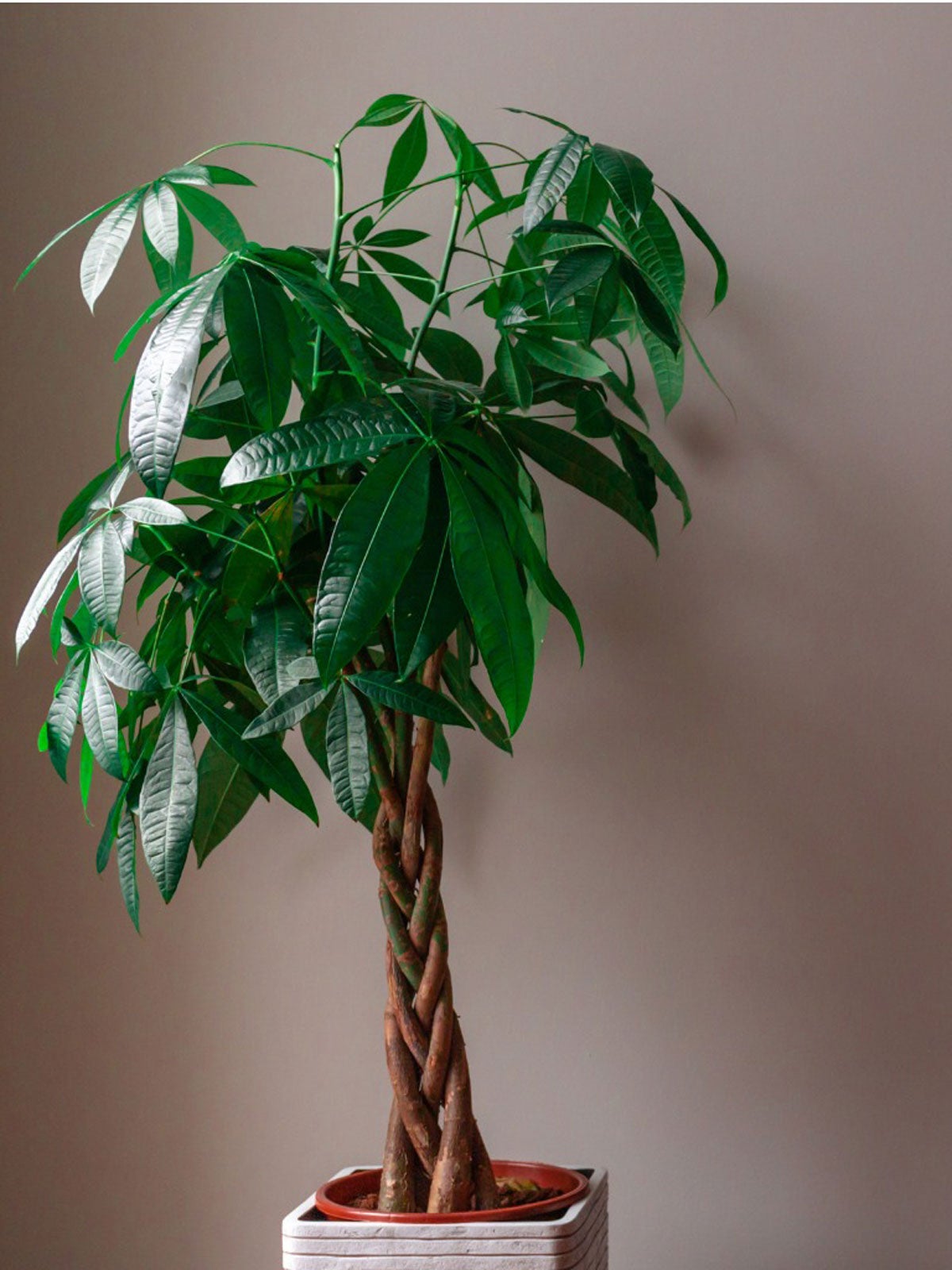The Money Tree plant: A Symbol of Prosperity and Good Fortune
The Money Tree, scientifically known as Pachira aquatica, is a popular houseplant renowned not only for its unique appearance but also for its symbolic significance in various cultures. Believed to bring good fortune and prosperity, this attractive plant has become a beloved addition to homes and offices worldwide.
Native to the swamps of Central and South America, the Money Tree is a tropical wetland tree that can grow quite tall in its natural habitat. However, as a houseplant, it typically reaches a more manageable height of 6 feet or less.

One of the most distinctive features of the Money Tree is its braided trunk. In nature, multiple stems often grow together, intertwining naturally. However, for aesthetic purposes, many commercially available Money Trees have their trunks intentionally braided. This practice not only enhances the plant’s visual appeal but also symbolizes unity and growth.
The Money Tree boasts glossy, deep green, palmate leaves that resemble outstretched hands, a characteristic that further contributes to its association with prosperity and abundance. Some varieties may even produce attractive, creamy white flowers, though flowering indoors is relatively uncommon.
The Money Tree holds significant cultural and spiritual importance, particularly in Feng Shui, the ancient Chinese art of placement and arrangement.

Prosperity and Wealth: The most common association is with wealth and prosperity. The braided trunk is believed to symbolize the intertwining of five elements: wood (the trunk), earth (the soil), water (irrigation), fire (sunlight), and metal (pot). This harmonious combination is thought to attract financial abundance.
The Money Tree is generally considered an easy-to-care-for houseplant, making it an excellent choice for both novice and experienced plant enthusiasts.
Indirect Light: Money Trees thrive in bright, indirect light. A location near an east-facing window is ideal.
Allow Soil to Dry Slightly: Water thoroughly when the top inch or two of soil feels dry to the touch.
Well-Draining Potting Mix: Use a well-draining potting mix formulated for indoor plants.
Moderate Humidity: While they can tolerate average home humidity, Money Trees appreciate slightly higher humidity levels.
Fertilize During Growing Season: Fertilize during the growing season (spring and summer) with a balanced liquid fertilizer diluted to half strength.
Prune to Shape: Prune to maintain the desired shape and size of the plant.
Yellowing Leaves: Yellowing leaves can indicate overwatering, underwatering, or nutrient deficiencies.
Air Layering: Air layering is the most common and successful method of propagating Money Trees.
The Money Tree is more than just a beautiful houseplant; it carries a rich symbolism of prosperity, good fortune, and harmony. With its unique appearance and relatively low-maintenance care requirements, it is a rewarding addition to any home or office. By providing the right conditions and care, you can enjoy the beauty and auspicious energy of this remarkable plant for years to come.


